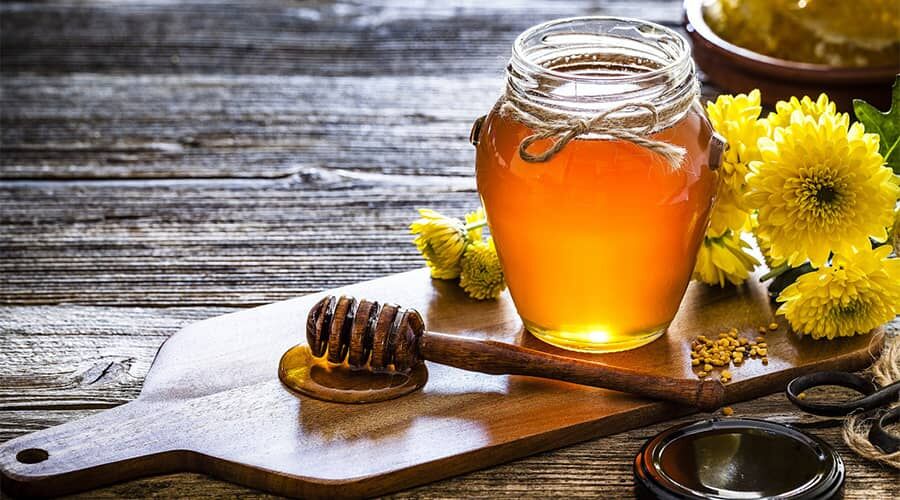
Where does the consumption of honey at Christmas come from?
In popular belief, honey was believed to sweeten life and it was also believed that those who ate honey at this time of year were protected against throat problems all year round.
Acacia honey:
Acacia honey produced in Hungary is considered Hungaricum because of its special quality and is a sought-after export product. The taste is not characteristic, therefore it is recommended for those who are new to honey. It contains very little pollen. Soft and less acidic, high in fructose, it keeps its original consistency for a long time. It is good for coughs, indigestion, strengthening the nervous and immune systems.
Lime blossom honey:
The colour of linden honey is darker than that of acacia, ranging from light yellow to amber. It has a strong, characteristic linden scent and a slightly bitter taste. Relatively difficult to crystallise. Its beneficial effects are well known in colds, sore throats and coughs. In the case of respiratory illnesses associated with fever, it has a more intense effect when consumed in combination with linden. Its consumption is also recommended to combat nervousness, restlessness and insomnia. Because of the bitter taste of this honey, it is not recommended for cooking and baking, as the bitter taste is intensified by the heat.
Chestnut honey:
High in minerals, this yellowish-brown honey has a chestnut blossom scent and a slightly bitter aftertaste. It can be spread on bread and scones or consumed in herbal teas.
Mixed floral honey:
The colour ranges from pale brown to dark brown, depending on the composition of the honeys it contains. It tends to crystallise. The honey is collected by bees from precious wild flowers, fruit trees and herbs and is therefore considered to be a high quality honey. Experts consider it to be among the most valuable honeys.
Sunflower honey:
Golden-yellow in colour with a sourish taste. It crystallizes very quickly, forming large, coarse crystals that settle to the bottom of the pot. A liquid, dilute layer remains above the crystals. It has good colouring properties, making it the most sought-after honey by gingerbread makers. Its high colouring power makes it a sought-after export product for the food industry. For this reason, it is mainly recommended for baking and cooking. It has a diuretic effect and is also known to have a mild antipyretic effect. Due to its acidity, it should not be consumed by people suffering from hyperacidity.
Rapeseed honey:
Liquid light-coloured honey, snow-white when crystallised. It crystallises very quickly. It forms small crystals in a characteristic way, making it an excellent honey for cream. Pure rapeseed honey does not have a very pleasant taste. It has an alkaline chemistry and is therefore also medicinal in cases of gastric acidosis and is edible and even recommended. Because of its high iron content, it is also recommended against anaemia.
Raspberry blossom honey:
Rich in potassium, calcium, iron, magnesium and phosphorus minerals, vitamins C, B, A. It is effective against inflammations of the throat and mucous membranes. Raspberry honey is also excellent for relieving spasms, muscle relaxation, menstrual cramps, and has analgesic properties.
Because of the propolis content of propolis honey, the beneficial effects are also stronger.
Like all honeys, this honey can be used externally, but its bactericidal and fungicidal effects are more intense, and it strongly inhibits the multiplication of viruses. When consumed internally, it has a very strong anti-inflammatory effect. Propolis honey is also effective in the treatment of gastritis and enteritis, because it not only kills or inhibits the reproduction of the pathogens that cause the disease, but also helps to relieve diarrhoeal symptoms due to its tannin content. Consumption of propolis honey is recommended for everyone with 3-4 teaspoons per day, except for people with hyperthyroidism and those allergic to honey, propolis, pollen. Another advantage is that honey enriched with propolis has a much more pleasant taste than propolis tincture and is also more suitable for children. Before regular consumption, small amounts should be tested for allergic symptoms.



I got this site from my buddy who shared with me concerning this site and now
this time I am browsing this website and reading very informative articles at this time.